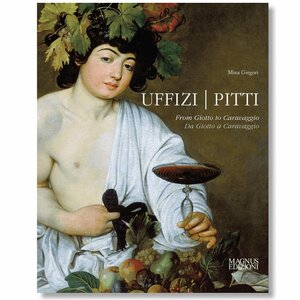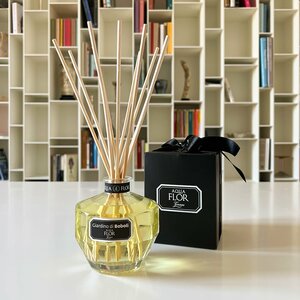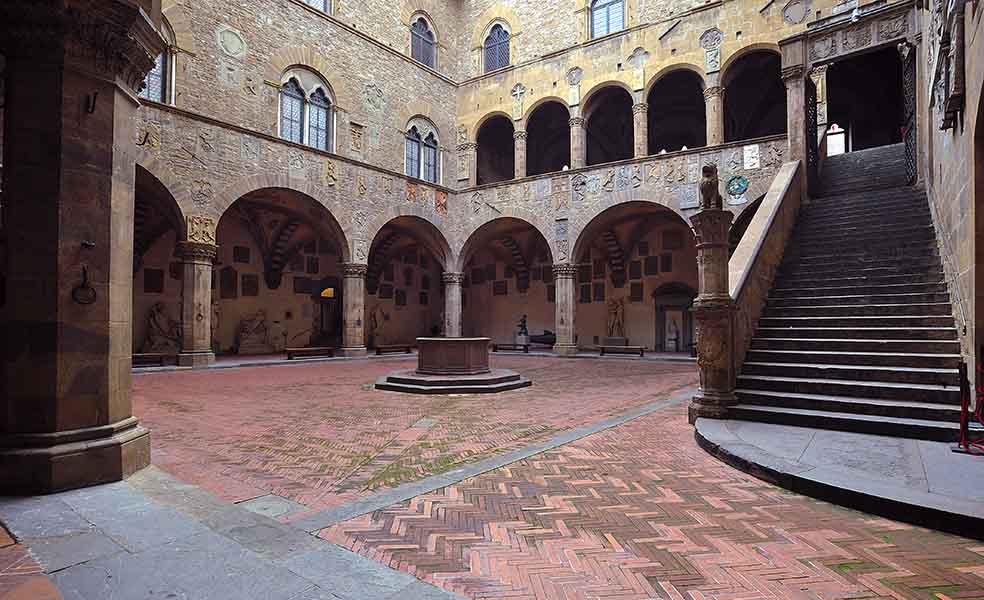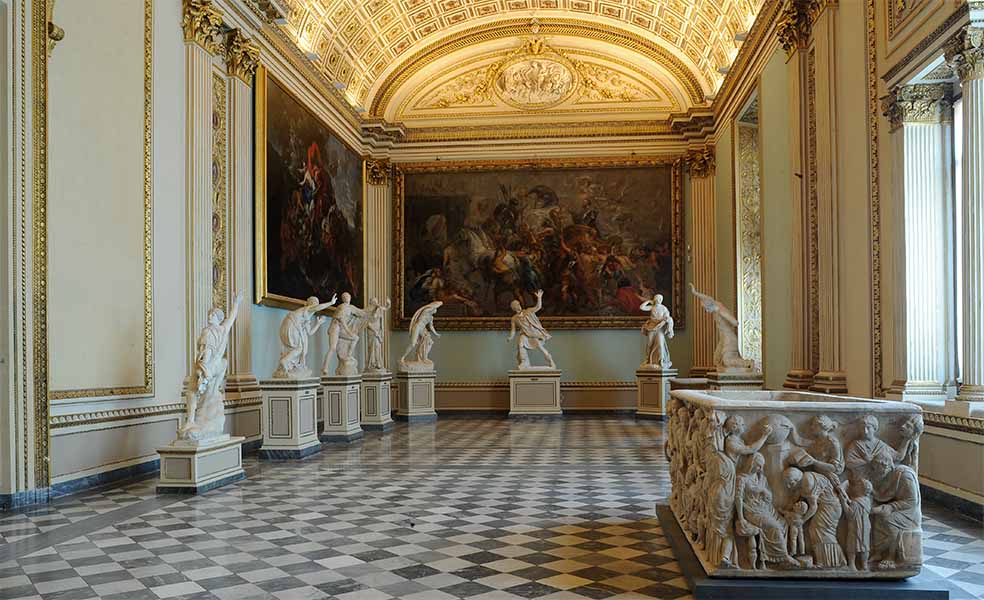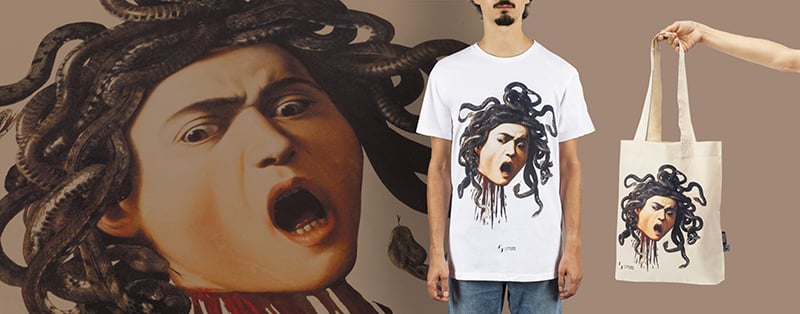Home / Experience / Benvenuto Cellini
Benvenuto Cellini
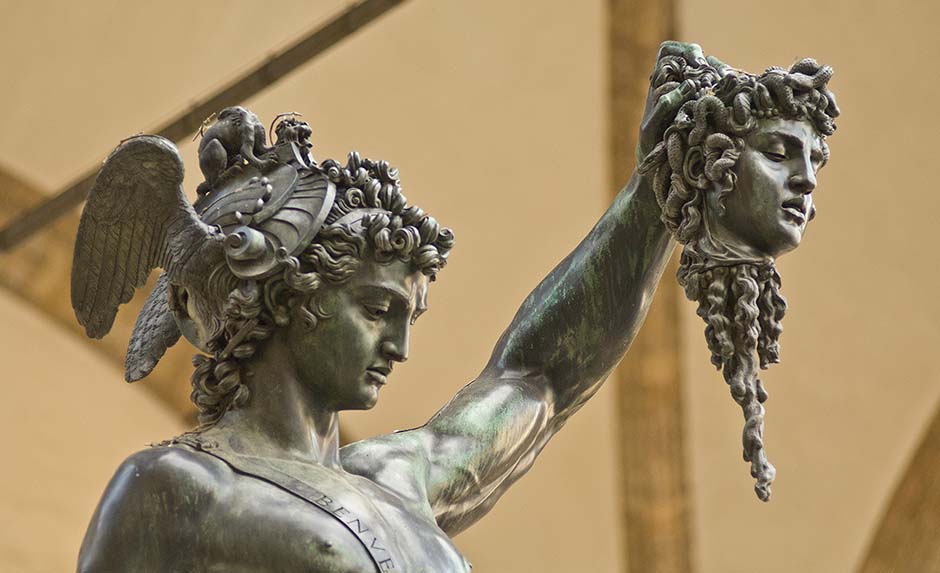
Goldsmith, sculptor and writer from Florence, Benvenuto Cellini is undoubtedly one of the leading figures of the Italian Mannerist scene. Determined and hot-tempered, he always lived on the edge between art and crime, in a constant alternation of marvellous creations and uncontrollable violence.
Youth and training: a fiery temperament
Son of Giovanni d’Andrea di Cristofani and Elisabetta Granacci, Benvenuto Cellini was born in Florence in 1500 into a well-off family. As he recalls in his autobiography (Vita or La vita, written between 1558 and 1566), his father worked as an engineer designing scaffolding, machinery for wool working and various devices, and also held the position of official piper in the city orchestra. Young Benvenuto therefore began studying music from an early age, though it was never to be his true vocation, despite his father’s many attempts to push him towards a career in the field.
At the age of thirteen he was apprenticed to Michelangelo Bandinelli and, in 1515, to Antonio di Sandro known as Marcone, both highly skilled goldsmiths. Despite his obvious talent for drawing, his father forced him to continue studying music, which young Benvenuto pursued reluctantly.
From early adolescence he showed signs of the hot-tempered, quarrelsome and often violent character that would accompany him throughout his life: at just sixteen he was exiled to Siena after a brawl, where he stayed for several months cultivating his true passion, goldsmithing.
On returning home, he was once again pushed to pursue musical studies and sent to Bologna. There, away from his father’s control, he came into contact with the goldsmithing world and continued his training.
In 1517 he returned to Florence but soon fled to Pisa for reasons he never specified, possibly family-related. From this point onwards, he moved between various cities in central Italy: alternating stays and apprenticeships in Florence, Siena and Rome with different goldsmiths, often changing location due to fights or violent crimes. During these years he studied preparatory drawings by Leonardo and Michelangelo, made sketches of ancient Roman ruins, and met young assistants from Raffaello’s workshop. This formative period left a lasting mark on his mature production.
Early independent years, between violence and civic duty
In 1523 Benvenuto Cellini committed his first documented crime: a death sentence for stabbing a rival goldsmith.
To escape execution, he fled to Rome, where he began working independently, first in the workshop of the goldsmith and chaser Lucagnolo da Jesi, then in that of Giovan Francesco della Tacca.
Compelled by circumstances to comply with his father’s much-disdained will, he yielded to a musical career and joined the band of Pope Clement VII as a cornett player. Thanks to his orchestral salary and growing goldsmith commissions, in 1524 he was able to open his own workshop.
His stay and success in Rome continued until the Sack of Rome (1527), a watershed in art history. The assault by the Landsknechts in the service of Emperor Charles V caused a true diaspora of artists from the city towards other Italian courts.
In Cellini’s case, the story is even more dramatic: always inclined to physical confrontation, he actively took part in the defence of the city alongside the papal army. After taking refuge in Castel Sant’Angelo, he killed Duke Charles of Bourbon and wounded the Prince of Orange. When the battle ended, he managed to leave Rome and return to Florence.
In search of new patrons
Like many artists of his time, Benvenuto spent several years moving from city to city in search of patrons. Despite numerous documented works, now lost, he was still unable to emerge and was forced to accept minor commissions.
In Mantua in 1528, he created a seal for Cardinal Ercole Gonzaga (now in the Museo Diocesano in town). The following year he returned to Rome as “maestro delle stampe” with the task of supervising the State Mint and, on that occasion, made a chalice for Clement VII.
It seemed likely he might settle at the papal court, but as so often in the life of this rebellious artist, events took a different turn.
In fact, in 1531 he killed his brother’s murderer in revenge, obtaining a pardon from the pope. The following year he reopened his workshop in Rome, but the situation did not remain calm for long: the pontiff withdrew his protection and two years later Cellini fled to Naples after assaulting a notary.
He remained in Naples only briefly, just long enough to make a medal to regain Clement VII’s trust. Thanks to this work he was allowed back into Rome, but in 1534, once again, violence overcame him: he killed Pompeo de’ Capitaneis, a rival goldsmith. Luckily, a new pope had just ascended to the papal throne, Paul III, who granted him a pardon. Despite this safeguard, Cellini fell under the enmity of Pier Luigi Farnese, illegitimate son of the pontiff, and was forced to flee once more. This time he chose Florence, where he admired Michelangelo’s Sagrestia Nuova, which had greatly impressed him in his youth. After yet another quarrel – this time with Ottaviano de’ Medici, a distant cousin of Lorenzo the Magnificent – he returned to Rome.
In the service of the French court
Benvenuto Cellini’s life appeared increasingly troubled, with little sign of a happy ending. Yet things began to change when Pope Paul III commissioned him to engrave the cover of a “uffiziolo” (a prayer book) as a gift for Emperor Charles V (now lost). Gradually, the artist carved out a role in European courts, staying also in Paris, perhaps at the invitation of the French king Francis I.
Back in Rome, however, he once again ran into trouble with the law: in 1538 he was imprisoned on charges of stealing papal jewels during the Sack of Rome. He escaped almost immediately, but the following year he was back behind bars. Eventually released, he went to Ferrara to work for Cardinal Ippolito d’Este.
His wanderings between Italy and France continued for many years, until an unexpected turning point.
The Saliera and a long-awaited fame
During his final and longest stay at the French court, Benvenuto Cellini created the work that would make him famous throughout Europe: the Saliera for Francis I (1540–1543, Vienna, Kunsthistorisches Museum). This splendid object in gold, ebony and enamel clearly demonstrates his remarkable skill as a goldsmith, his compositional talent, and his familiarity with the sculptural models of the admired Michelangelo. Far more than a trinket, it is a true work of art, a miniature sculpture imbued with the style later known as Mannerism.
Now recognised and appreciated, in 1545 Cellini finally returned permanently to his native city, welcomed by Grand Duke Cosimo I who appointed him official court sculptor. Considering that only the Saliera survived from that period, the duke’s choice may seem risky. However, from contemporary sources we know that in France Cellini had demonstrated his talent with large bronze works: he had even been commissioned to make twelve colossal torch-bearing statues for the left bank of the Seine.
Cosimo I asked him to execute his bust in 1548, now in the Museo Nazionale del Bargello, and finally his most famous work: the Perseo con la testa di Medusa (1545–1554, Florence, Loggia dei Lanzi).
The epic of the Perseo, a Mannerist masterpiece
The Perseo project was undoubtedly the most ambitious of Benvenuto Cellini’s career. His goal was to create a bronze colossus over three metres high – nearly six if the richly decorated base is included – that combined the detailed craftsmanship of a goldsmith with the power of Michelangelesque statuary.
After studying ancient bronzes, he decided to cast the group in only three pieces to be joined together. In his autobiography, Cellini recounts in great detail his fierce struggle with his own work and the immense effort required, made even harder by his personal troubles.
While working on the Perseo, he was blackmailed by the mother of one of his assistants over an alleged homosexual relationship. The woman tried to extort money from him, but Benvenuto, never one to be intimidated, threatened her with a knife and fled with the young man to Venice, where he stayed for some time.
On returning to Florence, he produced the head of Medusa, the first part of the composition.
Short of collaborators and with his reputation damaged by rivals’ slander, he persisted with his masterpiece. Stricken with violent fevers, perhaps caused by toxic metal fumes, he refused to give up. To make matters worse, a storm cooled the furnace of his workshop, slowing the casting process. Once the equipment was restored, another obstacle arose: the alloy for the remaining parts was too dense to pour, and in desperation he melted down all his household tinware to achieve the right consistency.
In the end, Cellini’s colossal effort bore fruit. The Perseo astonishes with its power, condensed in the taut muscles of the hero, and with its anatomical and decorative detail. It is the perfect synthesis of the Renaissance classical legacy and the serpentine, languid forms typical of Mannerism. A meeting of Michelangelo’s strength and Donatello’s grace, seen through a new, modern, utterly unique lens.
The work also embodies Cellini’s theory of multiple viewpoints: a sculpture, to be considered complete, must have at least eight equally valid perspectives. In other words, it must be admired in the round. There is no angle from which the Perseo is not striking.
The final years and the story of his life
After the Perseo, Benvenuto Cellini fell out with the grand duke and his collaboration with the Medici court came to an end. Others, such as Baccio Bandinelli and Bartolomeo Ammannati, took his place in Cosimo I’s favour, probably due to their more compliant nature and full adherence to the Florentine cultural programme.
No longer able to work, he began writing his memoirs.
Benvenuto Cellini died in Florence in 1571, having donated all his unsold works to Grand Duke Francesco I de’ Medici.
Cover photo: Perseus with the head of Medusa, 1545, Benvenuto Cellini, Galleria degli Uffizi, Florence
Florence, 1500 – Florence, 1571
Jewellery, sculpture and writing
Related products
Related museums
From €16,00
Originally the residence of the wealthy Florentine banker Luca Pitti, this magnificent palace was purchased in 1550 by Grand Duke Cosimo I de’ Medici, who established his court there with his wife Eleonora of Toledo. After two centuries, from 1737, the palace was to be the residence of the Lorraine family, who succeeded the Medici in the Grand Duchy, and later of the Savoy family during the five years when Florence was the capital of Italy.
Average visit time:
2 hours



